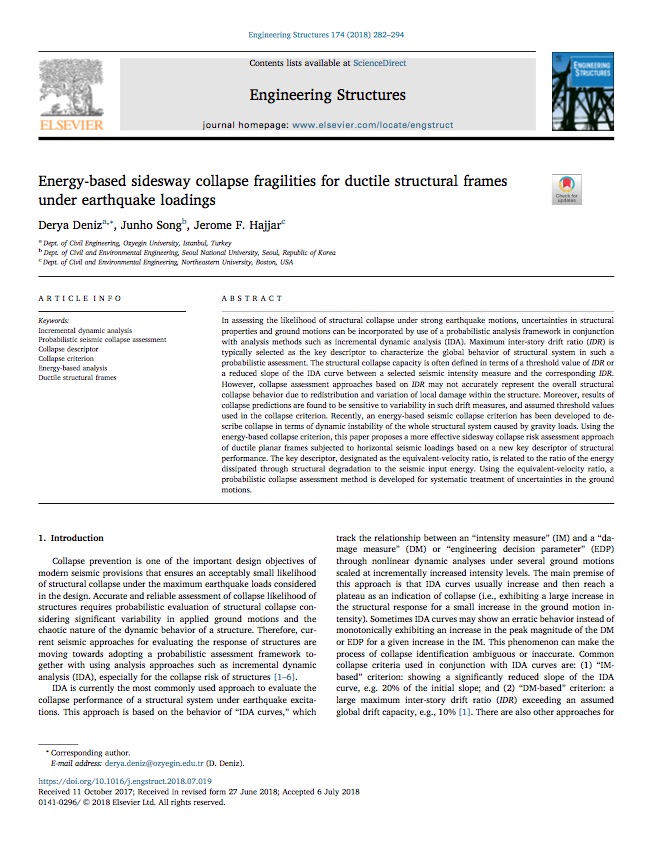A journal paper entitled “Energy-based sidesway collapse fragilities for ductile structural frames under earthquake loadings” has been recently published in Engineering Structures:

https://doi.org/10.1016/j.engstruct.2018.07.019
Abstract: In assessing the likelihood of structural collapse under strong earthquake motions, uncertainties in structural properties and ground motions can be incorporated by use of a probabilistic analysis framework in conjunction with analysis methods such as incremental dynamic analysis (IDA). Maximum inter-story drift ratio (IDR) is typically selected as the key descriptor to characterize the global behavior of structural system in such a probabilistic assessment. The structural collapse capacity is often defined in terms of a threshold value of IDR or a reduced slope of the IDA curve between a selected seismic intensity measure and the corresponding IDR. However, collapse assessment approaches based on IDR may not accurately represent the overall structural collapse behavior due to redistribution and variation of local damage within the structure. Moreover, results of collapse predictions are found to be sensitive to variability in such drift measures, and assumed threshold values used in the collapse criterion. Recently, an energy-based seismic collapse criterion has been developed to de- scribe collapse in terms of dynamic instability of the whole structural system caused by gravity loads. Using the energy-based collapse criterion, this paper proposes a more effective sidesway collapse risk assessment approach of ductile planar frames subjected to horizontal seismic loadings based on a new key descriptor of structural performance. The key descriptor, designated as the equivalent-velocity ratio, is related to the ratio of the energy dissipated through structural degradation to the seismic input energy. Using the equivalent-velocity ratio, a probabilistic collapse assessment method is developed for systematic treatment of uncertainties in the ground motions.